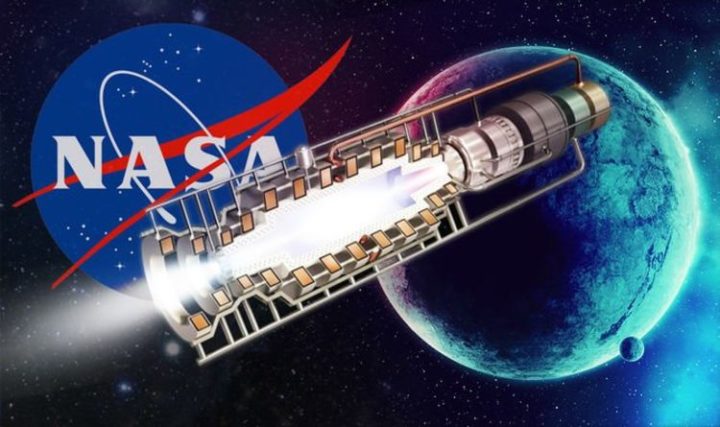By Bruce Gagnon coordinator of the Global Network Against Weapons & Nuclear Power in Space.
The US began launching space probes with nuclear power in the early 1960’s. One of these military satellites powered with a nuclear reactor fell back to Earth in April of 1964.
It was called SNAP 9-A and was launched aboard a Department of Defense weather satellite that failed to reach orbit. The nuclear reactor, as designed, released radioactive debris in our upper atmosphere during reentry and then burned up. Remnants struck the Indian Ocean. A total of 2.1 pounds of plutonium-238 vaporized in the atmosphere and spread worldwide.
Over the years there have been a host of space nuclear accidents by the US and former Soviet Union/Russia. See more here.
Dr. John Goffman studied the SNAP 9-A accident and concluded that the dispersed deadly plutonium-238 was a leading cause of the increase in cancers around the world today. During our 1997 Florida Coalition for Peace & Justice and Global Network campaign to stop the launch of the Cassini space probe, with 72 pounds of plutonium-238 onboard, Goffman was a huge help to us doing frequent media interviews where he warned of the dangers of global contamination if there was to be a launch accident.
Goffman’s earliest research was in nuclear physics and chemistry, in close connection to the Manhattan Project. He co-discovered several radioisotopes, notably uranium-233; he was the third person ever to work with plutonium. Later in life, Gofman took on a role as an advocate warning of dangers involved with nuclear power.
The nuclear industry currently views space as a new (and wide open) market for their toxic product that has run its dirty course on Mother Earth.
During our campaigns in 1989, 1990, and 1997 to stop NASA’s Galileo, Ulysses and Cassini plutonium launches, we learned that the nuclear industry positioned their agents inside NASA committees that made the decisions on what kinds of power sources would be placed on those deep space missions. Similarly, it now appears that the nuclear industry has also infiltrated the National Academies of Sciences, Engineering, and Medicine that has been studying missions to Mars. The recommendation, not any surprise, is that nuclear reactors are the best way to power a Mars mission.
But nukes are not the best for us Earthlings because the Department of Energy (DoE) has a bad track record of human and environmental contamination as they fabricate space nuclear devices. An accident at launch could have catastrophic consequences.
In 1996, just prior to the launch of Cassini, it was reported that while fabricating the plutonium generators for the Cassini space probe, 244 cases of worker contamination occurred at DoE’s Los Alamos lab in New Mexico. So it is not just a launch pad explosion that we worry about.
We fought the DoE and NASA on those previous nuclear launches and are entering the struggle again.
The nuclear industry has its sights set on nuclear-powered mining colonies on an assortment of planetary bodies – all necessitating legions of nuclear devices being produced at DoE and then launched on rockets that blow up from time to time. They are also now promoting a nuclear rocket to Mars – with reactors for engines. The Pentagon has long claimed that they need nuclear reactors to power space-based weapons.
We urge the public to help us pressure Congress, NASA and DoE to ‘say no’ to nukes in space. We’ve got to protect life here on this planet. The best way you can help is to share this information with others so that we can build an international base of awareness and action around this issue.
We are in the middle of a pandemic and people have lost jobs, homes, health care and even food on their table.
Trips to Mars (without nuclear devices) can wait.






